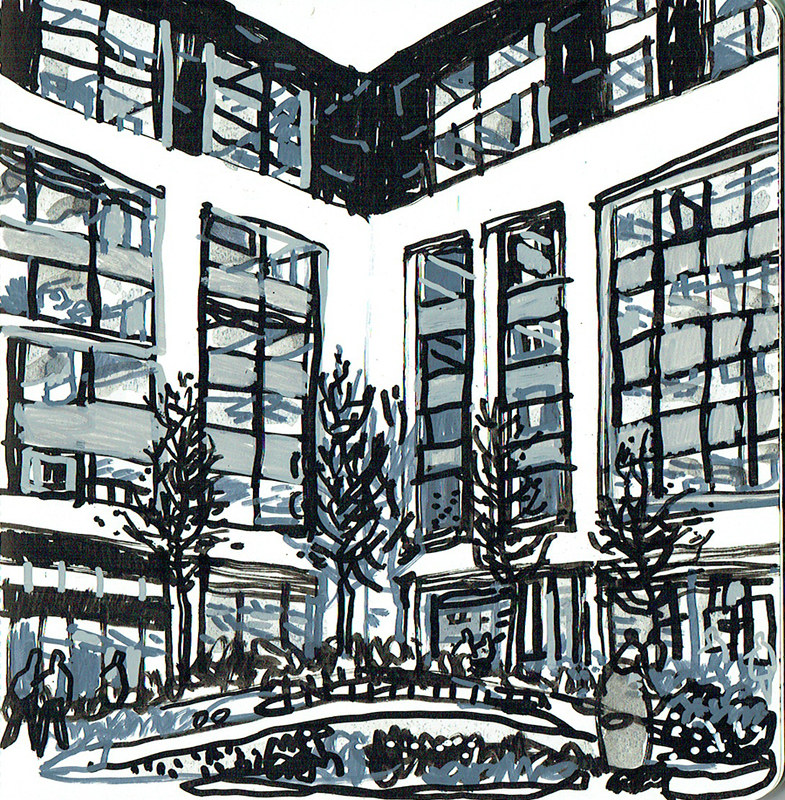 |
| Church Street, Twickenham by Helen Hayhoe |
Historic Twickenham is a wonderful location for sketching.
It is on the river Thames and has alleys, museums, sculpture, boats and
buildings of huge character in a compact area. Oh, and a rugby stadium. There could also be cranes – the steel rather
than feathered variety. But there are
plenty of our feathered friends on The Embankment where we’ll start the day.
The day is free of charge, no need to book, just turn up
with your art kit.
Key times and meeting
points for the day:
11am: Meet at The Embankment just below Café Sunshine (see
photograph above)
1pm: Meet at the corner of Water Lane and The Embankment
using the curved steps to look at drawings done so far
3.30pm: Meet at Marble Hill House at the front (north side),
in Marble Hill Park to look at drawings done, and take group photographs
Then for those wishing to dally longer and share each
other’s sketch books we will repair to The Crown pub, a short walk over the
grass, or up Montpellier Row or Orleans Road, each worthy of a sketcher’s
scrutiny.
If the forecast is inclement then we’ll remain in the
Twickenham town area with pubs, cafés and other shelter, meeting in The Eel Pie
pub on Church Street. A decision on
which option will be given at 11am and confirmed at 1pm.
Options for drawing
We will start the day on The Embankment where we will meet
at 11am just below Café Sunshine. Opposite
here is Eel Pie Island – a private island albeit accessible with discretion via
a narrow foot bridge. Nowadays there are
a rowing club, boatyard and moorings but it is perhaps better remembered (by
some of us) for its 60’s heydays launching the likes of The Rolling Stones, Joe
Cocker and Eric Clapton.
 |
| The Shark by John Swanson |
The recently opened Eel Pie Island Museum is nearby at 1 – 3
Richmond Road. That is opposite York
House, the home of Richmond Borough Council.
A fine 17th century building with, in its grounds, The Oceanides,
statues by Oscar Spalmach (Italian, 1864-1917), who carved them in Carrara marble
in the Roman studio of Orazio Andreoni at the turn of the nineteenth century.
They are known locally as ‘the naked ladies’.
 |
| The naked ladies by John Swanson |
There’s pretty Church Street with boutique shops and, on the
corner with Church Lane, the Museum of Twickenham.
And – you’ve guessed it – a church, St Mary’s.
At 1:00 pm we’ll meet on the corner of Water Lane and The
Embankment, using the curved steps to ‘show and tell’.
Weather permitting in the afternoon we’ll sketch crawl along
Riverside passing public gardens, Georgian Terraces, The White Swan . . .
 |
| The White Swan by John Webb |
. . . views over the River to Ham House, Orleans House,
(home of the Borough’s Art Gallery), a café and exhibition/craft spaces.
Thence to Marble Hill Park and Marble Hill House where we’ll
meet again at 3:30pm outside the front (north) to ‘throw down’ sketchbooks.
If the forecast is
inclement then we’ll remain in the Twickenham town area with pubs, cafés and
other shelter, meeting in The Eel Pie pub on Church Street. A decision on which option will be given at
11am and confirmed at 1pm.
A further option for the day is an exhibition at the Orleans Gallery, Richmond: People and Places, which runs from 2 June to 19 August. Several of our Urban Sketchers have had work selected.
A further option for the day is an exhibition at the Orleans Gallery, Richmond: People and Places, which runs from 2 June to 19 August. Several of our Urban Sketchers have had work selected.
Practical information
The nearest station is Twickenham, 5 – 10 minutes walk
away. There are numerous buses from
Richmond Station including 33, H22, R68, R70 and 490. Alight at York Street Twickenham.
From Marble Hill House the nearest station is St Margaret’s,
on the Waterloo line, or there are plenty of buses to Richmond.
There are pubs, cafes and shops in the Twickenham town area.
The day is organised by John Webb, Helen Hayhoe and John
Swanson









